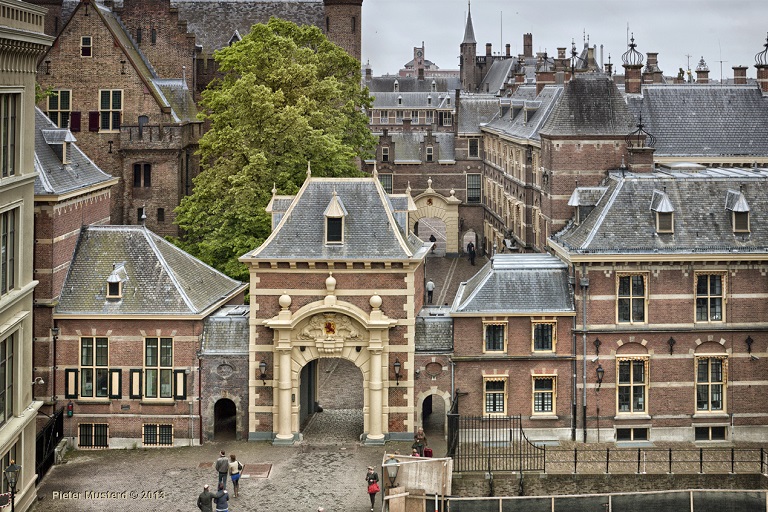It took one month: the fastest formation of the Drees Cabinet in 1948. The 31 days of this cabinet formation are anno 2024 a utopia. Cabinet Rutte III and Rutte IV, along with Cabinet Van Agt I in 1977, are in the top three slowest formations in Dutch history. Although the formation process has now taken almost three months since November 2023, this trend seems to be continuing as the formation appears to be back to square one. Now that Omtzigt (NSC) has dropped out of the formation and the debate with the informateur has led to much uncertainty, the question arises: where do we stand now in the formation process?
"We can no longer be ignored," PVV leader Wilders said in his victory speech on Nov. 22, 2023. The PVV emerged from the polls as the largest party and a new formation period could begin. This period is characterized by several steps.
The first step is the exploratory phase. In this phase, an explorer is appointed who holds initial discussions with all the political groups about coalition possibilities. The explorer then reports this to the House of Representatives. The first explorer after the elections was PVV Senator Van Strien. After only three days he resigned his duties. The reason was news reports linking Van Strien to fraud at his former employer. As a result, former minister and PvdA prominent Plasterk was appointed as the new scout. Plasterk held introductory talks with all parties. As a result, PVV, VVD, NSC and BBB were designated to hold joint substantive talks after the exploration was completed.
After the reconnaissance phase, the information phase begins. Wilders nominated Plasterk as informateur on Dec. 13, and his appointment was supported by the majority of the group chairs. The informateur's task is to guide the negotiations between a coalition that seems most feasible. The goal is to arrive at a draft coalition agreement containing the main points of policy for the coming cabinet period. It did not become an easy job for Plasterk because of disagreements on safeguarding the Constitution and the democratic rule of law. Agreement on these points was reached on Jan. 10 and a baseline was established. After this agreement has been reached, the informateur will examine whether there is a real prospect of reaching agreement on various issues. Important issues involved are migration, security of existence, climate and nitrogen.
After the groups involved agree on the content and agree to the coalition agreement, the informateur writes the final report. This is followed by the formation phase. The Lower House formally appoints a formateur, but in practice this is often the intended prime minister. During this phase, the parties negotiate about who can provide a minister for which portfolio. The cabinet formation ends with the staffing and the constituent council where the final report is drawn up.
Toward a new cabinet in 2024
Plasterk embraced both the role of explorer and the role of informateur during the formation. For these tasks he was nominated and appointed by the House of Representatives. It is only from 2012 that the Lower House has the task of agreeing on who leads the formation at the various stages. Until 2012, it was the job of the King(in) to appoint an (in)formateur. The role of the scout existed in the form of officials who reported to the King(in). Now the officials, the scouts and (in)formateurs are accountable in the House of Representatives instead of to the head of state. This change was made to make the formation more transparent and democratic. To do this in an accountable manner, the informateur is asked by the House of Representatives about the course of events
Just before the first informational phase was concluded, Omtzigt decided not to participate in the negotiations anymore. The NSC faction no longer wanted to participate in a majority-minority cabinet. This was because of allegedly withheld information in the financial documents. Informateur Plasterk responded with criticism of this "surprising move" by Omtzigt. Omtzigt was said to have too little respect for the "Institute informateur," according to the informateur. Nevertheless, Plasterk remained optimistic after Omtzigt's resignation and completed his work as informateur.
On Feb. 12, Plasterk presented his final report to House Speaker Martin Bosma (PVV). His advice for a new cabinet is "a minority cabinet, tolerated by the NSC faction, mentioning a business cabinet or extra-parliamentary cabinet as other options. His advice for a coalition with NSC, PVV, BBB and VVD was "given the announcements by several parties that they want to tolerate a cabinet, I note the following: it should be clear that not everyone can merely tolerate a cabinet. It is therefore necessary to examine what forms of cooperation are possible." His recommendation for a new cabinet is "a minority cabinet, tolerated by the NSC faction, with mention of a business cabinet or extra-parliamentary cabinet as other options."
Forming parties in debate
Following Plasterk's final report, a debate on his findings was held Feb. 14. The House of Representatives criticized the length of the formation, with discussions about the type of cabinet to be formed. How do the forming parties now stand in the formation
Despite Omtzigt's departure from the negotiations, Wilders continues to believe that the forming parties can reach a solution. He sees possibilities for a center-right majority cabinet. VVD leader Yeşilgöz sees an extra-parliamentary cabinet as the most logical option; on condition of equal commitment from all four parties with a program agreement and clear financial frameworks. In this cabinet, ministers are appointed based on expertise and can perform tasks without being politically accountable to parliament. The cabinet then operates more or less independently of the parliamentary majority. This is often considered a temporary solution until a more stable political situation arises. Yeşilgöz notes that this needs further investigation. "There will not be a center-right majority cabinet," the VVD leader said, "but the VVD is willing to provide ministers."
Omtzigt does not support a majorityor minority cabinet with PVV and calls for exploration of more parties for an extra-parliamentary cabinet. NSC reiterates not wanting to supply ministers to a cabinet with PVV, BBB and VVD, and calls for a new informateur to explore major issues such as energy transition. BBB leader Van der Plas finds it incomprehensible that Omtzigt (NSC) did not put the national interest first, but still wants to continue working together. Her preference remains a majority government, but she is open to other forms.
"Tricky assignment."
Much discussion ensued following the final report and the length of the formation. Plasterk resigned his position as informateur. Wilders submitted a motion proposing Kim Putters, chairman of the Social and Economic Council (SER), as Plasterk's successor. After this motion passed, Wilders indicated that new talks must be held with all group chairmen. It is also necessary to take stock of which form of government the forming parties prefer. Informateur Putters will further figure out in the coming weeks how an extra-parliamentary cabinet can be conceptualized and how the various parties interpret an extra-parliamentary or minority cabinet. A "difficult task," Putters said, partly because of the "complicated political landscape." Furthermore, Putters believes it is important to talk to all party leaders in the coming weeks about new forms and possibilities of a cabinet.
How to move forward?
Although cabinet formations from 2012 onward are more transparent and democratic because of the accountable role of the House of Representatives, it is also the formations from 2012 onward that earned the first two spots in the top three slowest cabinet formations. Still, there is little to predict about the duration of formations. The 1948 extra-parliamentary Drees Cabinet managed to form in a month. The last two cabinet formations are in the top three slowest formations in Dutch history. However, with all the forms of government the Netherlands has known, it does not necessarily follow that the current formation will also end up in this top three.


